#Damodar River
Explore tagged Tumblr posts
Text
Patratu Dam Opens Gate as Water Level Reaches Critical Point
Authorities issue alert to nearby residents as excess water is released from dam Continuous rainfall causes Patratu Dam’s water level to rise, prompting officials to open a gate for controlled release. RAMGARH – Gate number three was opened by the Patratu Dam management on Thursday morning to address the increasing water levels that have resulted from the ongoing rainfall. The water level in…
#राज्य#dam management#Damodar River#flood prevention#gate opening#heavy rainfall impact#Nalkari River#Patratu Dam#PTPS Patratu#river safety precautions#state#water level rise
0 notes
Text
Sanatani Saints
Part 3
Shri Samartha Ramdas
We will look into the life of Shri Samartha Ramdas who was a prominent Sanatani saint, poet, and spiritual leader in Maharashtra.

Early Life and Renunciation:
Shri Ramdas or previously Narayan was born into a Marathi Deshastha Rigvedi Brahmin family to Suryajipant and Ranubai Thosar. His father was thought to have been a devotee of the Vedic deity, Surya. Ramdas had an elder brother named Gangadhar. His father died when Narayan was only seven years of age. He turned into a sadhaka after the demise of his father and would often be noticed to be engrossed in thoughts about the divine.
As per legend, Narayan fled his wedding ceremony in Asangao near Jamb, at age 12, upon hearing a pandit (Hindu priest) chant the word 'Saawadhaana!' (Beware!) during a customary Hindu wedding ritual. He is believed to have walked over 200 km along the banks of Godavari river to Panchavati, a Hindu pilgrimage town near Nashik. He later moved to Taakli near Nashik at the confluence of Godavari and Nandini river. At Taakli, he spent the next twelve years as an ascetic in complete devotion to Rama. During this period, he adhered to a rigorous daily routine and devoted most of his time to meditation, worship and exercise. As per legend, he once blessed a widow lady of a long married life, without knowing that her husband has just died. It is said that he was able to give life back to the dead body of her husband and this act of miracle made him very famous in Nashik. He is thought to have attained enlightenment at the age of 24. He adopted the name Ramdas around this period. He later had an idol of Hanuman made from cowdung installed at Taakli.
His contribution to Freedom movement and literary works:
Unlike the saints subscribing to Warkari tradition, Ramdas is not considered to embrace pacifism. His writings include strong expressions encouraging militant means to counter the barbaric Islamic invaders. He endorsed significance of physical strength and knowledge towards individual development. He expressed his admiration for warriors and highlighted their role in safeguarding the society. He was of the opinion that saints must not withdraw from society but instead actively engage towards social and moral transformation. He aimed to resuscitate the Hindu culture after its disintegration over several centuries owing to consistent foreign occupation. He also called for unity among the Marathas to preserve and promote the local culture. Samartha Ramdas Swami served an inspiration for a number of Indian thinkers, historians and social reformers such as Bal Gangadhar Tilak, Keshav Hedgewar, Vishwanath Rajwade ,Ramchandra Ranade, and Vinayak Damodar Savarkar. Tilak derived inspiration from Ramdas when devising aggressive strategies to counter the British colonial rule. Ramdas had a profound influence on Keshav Hedgewar, the founder of Hindu nationalist organization Rashtriya Swayamsevak Sangh. He is also recognized for his role as a Guru to the Maratha king Shivaji Maharaj, inspiring him with principles of governance, spirituality, and valor.
Below are some of his notable literary works:
Manache Shlok (co-written by Kalyan Swami)
Dasbodh
Shree Maruti Stotra
Aatmaaram
11-Laghu Kavita
Shadripu Nirupan
Maan Panchak
Chaturthmaan
Raamayan (Marathi-Teeka)
His Teachings:
Ramdas was an exponent of Bhakti Yoga or the path of devotion. According to him, total devotion to Rama brings about spiritual evolution. His definition of "Bhakti" was in accordance with the philosophy of Advait Vedant. In Chapter 4 of his literary work Dasbodh, he describes Nice levels of devotion / communion - starting from listening / comprehending (श्रवण) to Surrender of oneself or being One with Self (आत्मनिवेदन) - the later being the core tenet of Advait Vedant - where the sense of separate "I" dissolves into non-duality. He encouraged the participation of women in religious work and offered them positions of authority.
Ramdas Swami is a revered spiritual figure in Maharashtra and remains relevant to contemporary society in Maharashtra.
🙏🙏 jai jai Raghuveera Samartha 🙏🙏
7 notes
·
View notes
Text

“As Satya-yuga is the best of yugas, as the Vedas are the best of scriptures, as Ganga is the best of rivers, so Kartik is the best of months, the most dear to Lord Sri Krishna.”.
Kartik: Month of Prayer and Giving
2 notes
·
View notes
Link
1 note
·
View note
Text
Perfect Road Trip Routes for an Adventure in the Monsoon
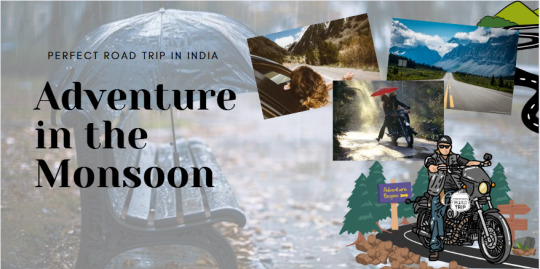
Discover the best road trip routes to embrace the magic of monsoon adventures. Explore scenic landscapes, lush greenery, and thrilling experiences that make rainy journeys unforgettable. Perfect for nature and adventure enthusiasts!
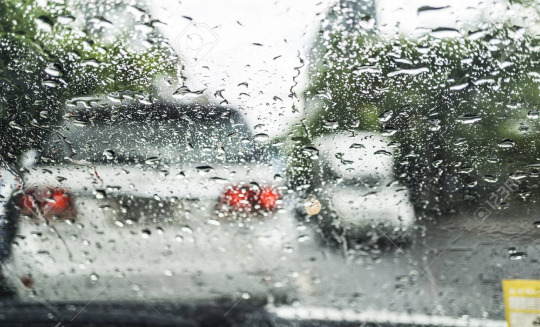
Friends, you know how important the monsoon is for us. It accompanies us in our happiness and joy. It captures some pleasant moments and fills our life with new enthusiasm. Like rain, who doesn't like it? If you get pakoras in such a season, then it is fun. As much as the pair of rain and pakoras looks good in monsoon, the journey on the roads in such a season is also equally good. This is a desire that you cannot stop. Rainy season, hot tea, fried bhaji and pakoras, roadside shops, these memories are perfect for roaming. But which roads should we choose for such exciting drive routes, which are safe and fun even in the rain. Let's know.
Important information for foreign travellers
If you are a foreign traveller and want to make your journey on the roads adventurous with such weather in India, then you will need an Indian visa. Which you will get from the embassy near you. Or you can also avail a facility like an India tour package. This will free you from the trouble of coming and staying here. So let's know where you can go here during your journey.
Here are some of the best routes for a road trip this monsoon:
1. Kolkata to Raichak
A Night View Of Howrah Bridge In Kolkata, India, With Golden Lights Emitting A Shadow In The Hooghly River, Kolkata, India
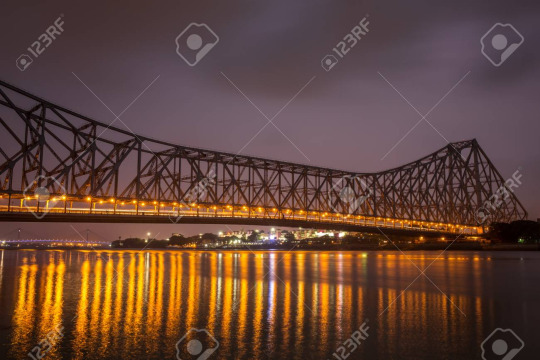
Total Distance: 54 km
Total Duration: 2 hrs 15 mins – 2.5 hrs (non-stop)
Routes:
Kolkata – Bhasa – Bishnupur – Kriparampur – Sarisha – Raichak
Kolkata – Rajpur Sonarpur – Baruipur – Andharmanik – Bishnupur – Kriparampur – Sarisha – Raichak
Preferred Route: Route 1 for better roads.
The Trip
A large, red brick building with a colonnaded facade and a flat roof. The building is surrounded by a lawn and palm trees, with a pathway leading towards it. The sky is cloudy.
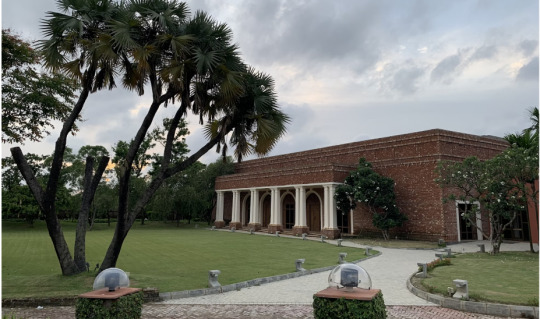
Raichak are a perfect weekend escape from Kolkata. The drive takes you from busy city street to peaceful rural roads. Visit Dhyan Ashram, a quiet Jesuit retreat, and the beautiful Jain temples at Bhasa. Raichak itself sits on the Ganges Delta, with charming temples and a taste of simple village life.
2. Srinagar to Leh
Dal Lake, Srinagar, Jammu & Kashmir, India, With Yellow Golden Shikara, Floating On The Lake With Clouds In The Sky And Mountains In The Background
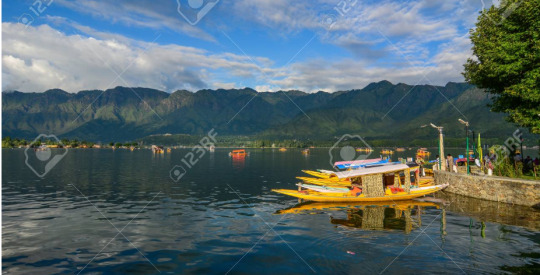
Total Distance: 418 km
Total Duration: 10 hrs 10 mins – 10 hrs 20 mins (non-stop)
Route:
Srinagar – Ganderbal – Sonamarg – Baltal – Dras – Mulbekh – Lamayuru – Khalsi – Alchi – Nimmoo – Leh
The Trip
SonaMarg Mountain, Jammu Kashmir, India
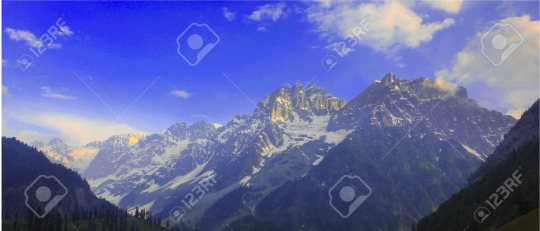
The drive from Srinagar to Leh is one of the most amazing in India. Start with the beauty of Dal Lake, then head to Sonamarg, which is the gateway of the old Silk Route. Pass through the stunning Baltal Valley and Dras, the coldest inhabited town in India. You'll also see the moon-like landscape of Lamayuru. The scenic drive along the Indus River, with its ever-changing views, ends in the beautiful town of Leh, known for its peaceful atmosphere and unique culture.
3. Kolkata to Shantiniketan
Victoria Memorial, Kolkata, West Bengal, India
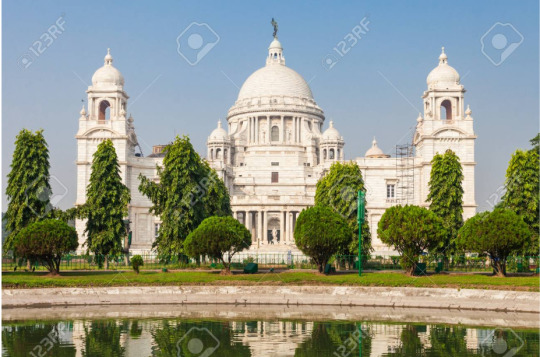
Total Distance: 163 km
Total Duration: 3.5 – 4 hrs (non-stop)
Routes:
Kolkata – Burdwan – Bolpur
Kolkata – Bhatpara – Bolpur
Preferred Route: Route 1 for better roads and shorter travel time.
The Trip
Damodar River, West Bengal, India With Red And White Color Boat Tied At The SeaShore
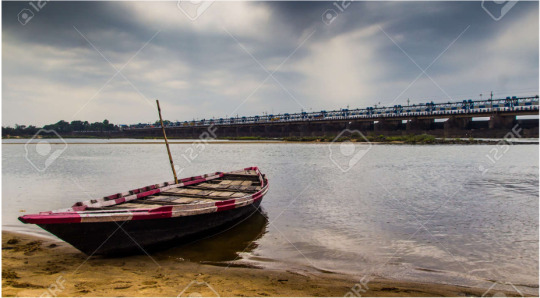
The drive to Shantiniketan is lush and green. Once you leave Kolkata, the countryside opens up , and you'll pass the mighty Damodar River. Stop at the historic Burdwan Raj Bari before continuing to Bolpur. Shantiniketan, with its mix of art, culture, and nature, is the perfect escape from city life.
4. Delhi to Khajuraho
Red Fort, Delhi, India

Total Distance: 630 – 660 km
Total Duration: 10.5 – 11 hrs (non-stop); 13 hrs (with stops)
Routes:
Delhi – Mathura – Agra – Dholpur – Morena – Gwalior – Tekanpur – Dabra – Jhansi – Barwa Sagar – Nowgong – Chhatarpur – Khajuraho
Delhi – Mathura – Agra – Fatehabad – Auraiya – Kuthond – Poonchh – Rewan – Jhansi – Barwa Sagar – Nowgong – Chhatarpur – Khajuraho
Preferred Route: Route 1 for better roads.
The Trip
Khajuraho Temple, Madhya Pradesh, India

This drive takes you through some of India's most famous historical places. Start by visiting Mathura, the birthplace of Lord Krishna, and then head to Agra to see the stunning Taj Mahal. Explore Gwalior Fort and stop at Jhansi, known for the bravery of Rani Laxmibai. Before reaching Khajuraho, take a quick dip in one of the waterfalls in Chhatarpur or admire the beautiful Benisagar Dam.
5. Delhi to Bikaner
Lotus Temple, Delhi, India
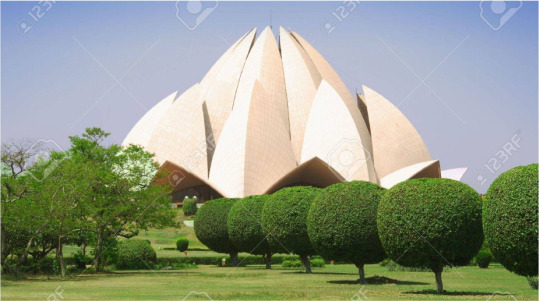
Total Distance: 545 km
Total Duration: 8 – 8.5 hrs
Routes:
Delhi – Bahadurgarh – Rohtak – Bhiwani – Chirawa – Jhunjhunu – Mandawa – Fatehpur – Ratangarh – Bikaner (NH709)
Delhi – Rewari – Shahjahanpur – Behror – Kotputli – Reengus – Sikar – Laxmangarh – Fatehpur – Ratangarh – Bikaner (NH709)
Delhi – Gurgaon – Rewari – Narnaul – Chirawa – Mandawa – Fatehpur – Ratangarh – Bikaner (via NH8 & NH11)
Preferred Route: Route 3 is the fastest.
The Trip
Junagarh Fort In City Of Bikaner, Rajasthan, India
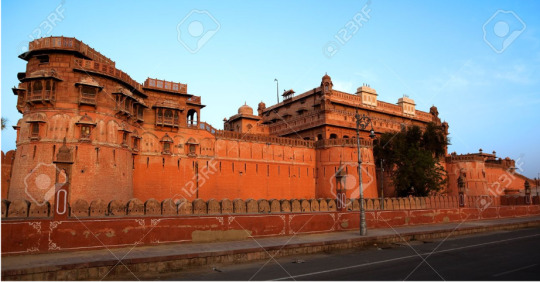
The drive from Delhi to Bikaner are full of different experience. Start by cruising in the smooth highways from Delhi, passing through Gurgaon and Rewari. The scenery changes from busy city views to peaceful farmlands as you cross Kori. Make sure to stop at roadside dhabas for hot paranthas and lassi—a classic North Indian treat.
One of the best stops is Mandawa, a town known as the "Open Art Gallery" because of its murals and frescoes on old havelis. Take a break here and enjoy the views. As you get closer to Bikaner, the landscape opens up into the vast Thar Desert, with camel safari camps and the historic Rampuria Haveli, which has Mughal, Rajput, and British architectural styles.
6. Delhi to Jaipur
Qutub Minar, Delhi, India
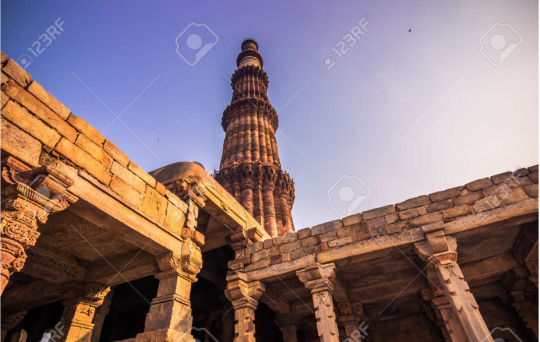
Total Distance: 277 km
Total Duration: 5 hrs (non-stop)
Routes:
Delhi – Rewari – Kotputli – Manoharpur – Jaipur
Delhi – Faridabad – Mathura – Bharatpur – Mahwa – Dausa
Preferred Route: Route 1 is quicker.
The Trip
Bhangarh Fort, Alwar, Rajasthan, India
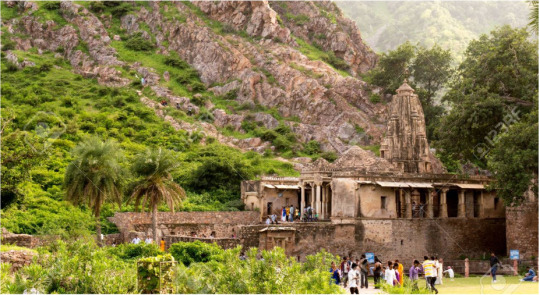
This route takes you along the Delhi-Ajmer Expressway, with great views and convenient stops. Stop at Kotputli to explore Alwar, known for its beautiful architecture, or take a detour to Sariska Tiger Reserve. Before reaching Jaipur, visit the amazing Amer Fort and Nahargarh Fort. Once in Jaipur, enjoy a true Rajasthani experience at Chokhi Dhani, a recreated village that showcases local culture.
Ready for the Open Roads?
Road trips are an amazing way to experience local culture, discover hidden paths, and enjoy authentic food—not just the destination. So, are you ready to hit the open roads and explore everything India has to offer?
#travel#travelling#roadtripsinindia#bestroadtripsinindia#adventureroadtripsinindia#adventuroustourists
0 notes
Text
Lights The Way As UPS Dealers In Silvassa

Forget the Dadra & Nagar Haveli energy roller coaster! In Silvassa's thriving business landscape, even a flicker can dim your growth. Eprompt Enterprise, your go-to UPS dealer in Silvassa, flips the script, weaving a tapestry of unwavering power, vibrant success, and warranties that leave you worry-free. We're not just dealers, we're your power playmakers!
Blackouts Bite, We Fight Back:
Flickering Fears Fade: Ditch the panik attack with our robust online UPS systems, bridging power gaps like master weavers crafting intricate borders. Keep those machines humming and profits flourishing, even during the longest outages.
Safeguard Your Silvassa Gold: Textile machines? IT empires? Eprompt's UPS shields your equipment from voltage surges and power dips, preserving their lifespan like a dyer safeguarding vibrant colors. Fewer breakdowns, more beautiful profits!
Time is Money, We Make You Honey: Every minute of darkness is a lost rupee. Eprompt's online UPS minimizes downtime, ensuring your profits flow like the Damodar River, leaving competitors drowning in their own power woes. Time saved, money earned, success unraveled!
Benefits Woven with Every Circuit:
Tech Warriors at Your Service: Our UPS systems are no ordinary backups. They're woven with cutting-edge tech, boasting features like advanced battery management, remote monitoring, and smart load shedding. This means optimal performance, minimized costs, and peace of mind knowing your power dance is always perfectly balanced.
A Thread for Every Loom: Forget one-size-fits-all! Eprompt offers a diverse range of single and three-phase online UPS, from powering single workstations to illuminating entire factories. No matter your power needs, we have the thread!
Warranty Stronger than a Gujarati Khadi Saree: Our online UPS systems are built to last, with components chosen for exceptional durability and longevity. And to back our confidence, we offer extended warranties stronger than a handloom sari, leaving you worry-free, knowing your power partner is always by your side.
Not Just a Dealer But Your Trusted Power Partner
Years of Expertise: We've been powering Silvassa for decades, building a reputation for reliable solutions and exceptional service. We're not just dealers, we're the master weavers of uninterrupted success!
One-Stop Power Haven: From finding the perfect UPS system to installation, maintenance, and beyond, we offer a comprehensive range of services to keep your power, and your profits, never running dry. Consider us your one-stop power oasis!
Local Support, Global Know-how: Our team of tech-savvy experts understands Silvassa's unique needs and offers localized support backed by the latest global advancements. We speak your language, literally and figuratively!
Don't let fickle power unravel your Silvassa dreams. Choose Eprompt Enterprise, the UPS dealer that weaves a future of uninterrupted production, extended equipment life, and profits that never dim. Contact us today and let your success story shine as bright as the lights powered by Eprompt!
#silvassa#eprompt enterprise#gujarat#ups supplier#ups system#valsad#power solutions#power electronics
0 notes
Text
Historical Landmarks in Durgapur: A Journey Through Time
Durgapur, a city nestled in the heart of West Bengal, is renowned for its industrial prowess, yet it holds a treasure trove of historical landmarks waiting to be explored. This vibrant city, often dubbed the "Steel City," offers a unique blend of modernity and rich cultural heritage. For those planning to explore its historical gems, finding the best hotels in Durgapur is essential for a comfortable and enriching stay. Here is a journey through some of the most notable historical landmarks in Durgapur.
Rahreswar Shibtola
Rahreswar Shibtola is one of the oldest temples in Durgapur, dating back to the 12th century. Dedicated to Lord Shiva, this ancient temple stands as a testament to the architectural brilliance of the era. The temple's stone carvings and intricate designs showcase the artistic excellence of the craftsmen of that period. A visit to Rahreswar Shibtola offers a serene and spiritual experience, allowing visitors to connect with the city's historical roots.
Travel Tip: Early morning visits are recommended to enjoy the temple's tranquility and avoid the midday crowds.
Bhabani Pathak’s Tilla
Bhabani Pathak’s Tilla is an underground hideout associated with the legendary freedom fighter Bhabani Pathak. This historical site is shrouded in mystery and offers a fascinating glimpse into the underground tunnels used by freedom fighters during the colonial era. The tunnels are believed to extend to several parts of the city, and exploring them provides an adventurous experience for history enthusiasts.
Travel Tip: Hiring a local guide can enhance your visit by providing detailed insights and stories about the hideout and its historical significance.
Garh Jungle
Garh Jungle, also known as the "Durgapur Jungle," is a site of immense historical and religious significance. It is believed to be one of the oldest forests in the country, with references dating back to the Mahabharata. The jungle houses the Garh Temple, dedicated to Goddess Durga, and is a popular destination for pilgrims and nature lovers alike. The lush greenery and serene ambiance make Garh Jungle a perfect escape from the hustle and bustle of city life.
Travel Tip: Visit during the festival of Durga Puja to witness the grand celebrations and cultural festivities that take place in the jungle.
Ram Mandir
Ram Mandir, located in the heart of Durgapur, is another significant historical and religious site. This beautifully constructed temple is dedicated to Lord Rama and is known for its peaceful atmosphere and stunning architecture. The temple complex also includes smaller shrines dedicated to other deities, making it a prominent spiritual center in the city.
Travel Tip: Evening aarti (prayer) sessions at Ram Mandir are particularly enchanting and offer a deeply spiritual experience.
Durgapur Barrage
The Durgapur Barrage, constructed over the Damodar River, is not just an engineering marvel but also a historical landmark. Built in the 1950s, the barrage played a crucial role in controlling floods and providing irrigation to the surrounding areas. Today, it stands as a symbol of Durgapur's industrial growth and development. The scenic views of the river and the barrage make it a popular spot for picnics and leisurely strolls.
Travel Tip: The best time to visit is during the monsoon season when the river is full, offering a spectacular view of the cascading water.
Nehru Stadium
Nehru Stadium, named after India’s first Prime Minister Jawaharlal Nehru, is a historical sports venue in Durgapur. The stadium has hosted numerous sports events and cultural programs over the decades, contributing to the city's vibrant cultural scene. It serves as a reminder of Durgapur's commitment to promoting sports and cultural activities.
Travel Tip: Check the local event calendar for any sports events or cultural programs scheduled during your visit for a lively and engaging experience.
Ginger Durgapur
When planning your visit to explore these historical landmarks, ensuring a comfortable stay is crucial. Ginger Durgapur offers one of the best hotels in Durgapur, providing modern amenities and excellent service to make your stay memorable. Conveniently located near the city's major attractions, Ginger Durgapur is an ideal choice for both leisure and business travelers.
The hotel features well-appointed rooms with contemporary decor, high-speed Wi-Fi, and 24-hour room service, ensuring that guests have a relaxing and hassle-free experience. Additionally, Ginger Durgapur offers state-of-the-art meeting and conference facilities, making it a perfect choice for business travelers looking to host events or meetings.
Ginger Durgapur's proximity to the city's historical landmarks makes it an excellent base for exploring. Whether you're visiting Rahreswar Shibtola, Bhabani Pathak’s Tilla, or the Durgapur Barrage, staying at Ginger Durgapur ensures that you are never too far from the action.
For dining, the hotel's in-house restaurant serves a variety of delicious cuisines, catering to diverse tastes and preferences. After a day of exploring, you can unwind at the restaurant and enjoy a sumptuous meal, making your stay even more enjoyable.
If you are searching for hotels in Durgapur city center, Ginger Durgapur stands out as a prime option with its strategic location, offering easy access to both historical sites and modern amenities.
Conclusion
Durgapur's historical landmarks offer a captivating journey through time, showcasing the city's rich cultural heritage and historical significance. From ancient temples and underground hideouts to engineering marvels and serene jungles, Durgapur has something to offer every traveler.
When planning your trip, consider staying at Ginger Durgapur for a comfortable and enriching experience. With its modern amenities, excellent service, and prime location, Ginger Durgapur is the perfect choice for exploring the city's historical treasures. Make your visit to Durgapur memorable by immersing yourself in its history and enjoying a comfortable stay at one of the best hotels in Durgapur.
0 notes
Text
Maithon Dam: Exploring Nature & Hydroelectric Power in Jharkhand
Maithon Dam, located in Dhanbad the state of Jharkhand, India, stands as a monumental blend of natural beauty and engineering prowess. Constructed on the Barakar River, this dam serves as a key component of the Damodar Valley Corporation (DVC) project, providing both hydroelectric power and a serene spot for tourism. Historical Background Inaugurated in 1957, Maithon Dam is one of the oldest…
0 notes
Text
Cable Cars And Ropeways Market Analysis, Key Manufacturers, and Growth Forecast 2022 to 2032
The global cable cars and ropeways market is expected to reach a valuation of US$ 11.5 Million in 2032, with a fantastic growth rate of 10.6% CAGR from 2022 to 2032. The cable cars and ropeways market is expected to grow from an anticipated value of US$ 4.21 million in 2022 due to increased tourism activities around the world. More and more countries are emphasising the integration of zipping and ropeway projects into their tourism attractions. This, in turn, will boost cable car and ropeway sales over the forecast period.
Aerial lifts that use one or two fixed ropes or cables to hold the conveying vehicle and a third rope or cable for proper propulsion are known as cable cars and ropeways. These cars make use of technology that is simple, powerful, and inexpensive. C
able cars and ropeways are a rapid, inexpensive, and convenient mode of transportation, particularly in hilly and mountainous locations, areas with rivers, snow-covered areas, uneven terrain, and so on. Furthermore, technological advancements have enabled the installation of electric motors and steel wires that maximise efficiency. As a result, cable cars and ropeways have been widely adopted in a variety of places that offer tourist and adventure attractions, as well as areas with mining operations.
Request a Sample Copy of this Report @ https://www.futuremarketinsights.com/reports/sample/rep-gb-1931
With emerging trends in cable cars and ropeways, the market is steadily becoming a preferred choice of travel in tourist and winter regions. Gradually, opportunities are also emerging in urban transportation. Furthermore, evolving technology and high advantages associated with cable cars and ropeways are expected to propel the market towards growth over the forecast period.
“Rising adoption of latest technology coupled with rapidly expanding tourism industries are stimulating the sales of cable cars and ropeways in the global market over the forecast period,” says an FMI analyst.
Key Takeaways:
Strict safety regulations and high power consumption may hamper market prospects.
North America to account for 18.4% of the overall market share in 2022.
Europe will undergo considerable target market growth over the forecast period.
Start-up ecosystem in the market will likely introduce new and enhanced products into the market.
Competitive Landscape
Doppelmayr Garaventa Group, Vergokan, Kreischberg: Cableways, Dubrovnik cable cars, Kropivnik Cableways Pvt. Ltd., Damodar ropeways, and Bullwheel international cable car corp among others, are some of the major players in the cable cars and ropeways market that are profiled in the full version of the report.
In a fairly competitive market, major players are concentrating on market expansion strategies like mergers, acquisitions, partnerships, and agreements. These businesses also vie for the government tenders to gain a competitive edge.
More Insights into the Cable Cars and Ropeways Market Report
In its latest report, FMI offers an unbiased analysis of the global cable cars and ropeways market, providing historical data from 2016 to 2021 and forecast statistics for 2022 to 2032. To understand the global market potential, growth, and range, the market is segmented based on industry (tourism, material handling, public transportation, mining industries), sales channels (OEM (Original Equipment Manufacturer), aftermarket), type (fixed grip installations, drag lifts, fixed grip chairlifts, pulsed gondola ropeways, detachable installations, detachable chairlifts, mono cable detachable gondola lifts, telemix: combined detachable chairlift and gondola lift, bicable (2S) & tricable (3S) gondola lifts, aerial tramway, funicular), and region.
According to the latest FMI reports, based on region, the cable cars and ropeways market in North America is expected to present considerable growth over the assessment period. The region is expected to account for 18.4% of the overall market share. This growth can be attributed to usage of cable cars and ropeways in urban transportation as well as their application in multiple mountaineering and hiking spaces. Advancing tourist areas are also supplementing this growth.
In Europe, the cable cars and ropeways market is expected to present healthy growth over the forecast period. The region currently holds 25.2 % of the global market share. Booming tourism sector along with an intensely dynamic demography seem to bolster the regional market growth over the projected period.
For Additional Information on this Report @ https://www.futuremarketinsights.com/reports/cable-cars-and-ropeways-market
Key segments
By Industry:
Tourism
Material Handling
Public transportation
Mining industries
By Sales Channel:
OEM (Original Equipment Manufacturer)
Aftermarket
By Type:
Fixed grip installations
Drag lifts
Fixed grip chairlifts
Pulsed gondola ropeways
Detachable installations
Detachable chairlifts
Mono cable detachable gondola lifts
Telemix combined detachable chairlift and gondola lift
Bicable (2S) & Tricable (3S) Gondola lifts
Aerial tramway
Funicular
By Region:
North America
Latin America
Asia Pacific
Middle East and Africa
Europe
0 notes
Text
Escape to pure bliss at Hotel Damodar Retreat - Durgapur's premier destination for a luxurious stay. Immerse yourself in opulence and enjoy West Bengal's best hospitality
0 notes
Text
7 Days Travel Itinerary For Jharkhand

7 Days Travel Itinerary For Jharkhand
Here's a 7-day travel itinerary for Jharkhand, a state located in eastern India that's known for its rich cultural heritage, natural beauty, and vibrant tribal culture:
Day 1: Ranchi
Arrive at Ranchi, the capital city of Jharkhand Visit the iconic Hundru Falls, a beautiful waterfall located 45km from Ranchi Explore the Tagore Hill, the home of the famous poet Rabindranath Tagore when he stayed in Ranchi Visit the Rock Garden, a beautiful garden with rock sculptures and a small waterfall
Day 2: Netarhat
Head to Netarhat, a small hill station located around 150km from Ranchi Visit the Netarhat Dam, which offers beautiful views of the surrounding hills and forests Explore the Upper Ghaghri Falls, a picturesque waterfall located around 4km from Netarhat Enjoy the scenic beauty of the hills and forests around Netarhat
Day 3: Betla National Park
Head to Betla National Park, a beautiful national park located around 210km from Netarhat Go on a jeep safari to explore the wildlife and natural beauty of the park Visit the Betla Fort, a historic fort located within the park that offers beautiful views of the surroundings Spend the night in a jungle resort inside the park
Day 4: Hazaribagh
Head to Hazaribagh, a town located around 100km from Betla National Park Visit the Hazaribagh Wildlife Sanctuary, which is home to a variety of wildlife including tigers, leopards, and elephants Explore the beautiful Hazaribagh Lake, which is surrounded by hills and offers great views Visit the Rajrappa Temple, a popular pilgrimage site located around 70km from Hazaribagh
Day 5: Deoghar
Head to Deoghar, a town located around 160km from Hazaribagh Visit the famous Baba Baidyanath Temple, a popular Hindu pilgrimage site that attracts thousands of devotees every year Explore the beautiful Nandan Pahar, a hill located in Deoghar that offers great views of the surroundings Visit the Naulakha Temple, a beautiful temple located in the heart of Deoghar
Day 6: Giridih
Head to Giridih, a town located around 115km from Deoghar Visit the beautiful Khandoli Dam, which offers great views of the surrounding hills and forests Explore the Parasnath Hills, a range of hills that is considered a holy site for Jains and offers great views Visit the Jain Museum, which houses a collection of artifacts related to Jainism
Day 7: Dhanbad
Head to Dhanbad, a city located around 115km from Giridih Visit the Panchet Dam, a beautiful dam located on the Damodar River Explore the Topchanchi Lake, a beautiful lake surrounded by hills and forests Visit the Shakti Mandir, a popular temple located in the heart of Dhanbad This itinerary will take you through some of the best places to visit in Jharkhand, from the natural beauty of waterfalls and hills to the rich cultural heritage of the state.
How many days are enough for Jharkhand?
The number of days required to explore Jharkhand entirely depends on your travel preferences, interests, and the places you want to visit. However, we recommend spending at least 5 to 7 days in Jharkhand to cover some of the popular tourist destinations such as Ranchi, Netarhat, Betla National Park, Hazaribagh, Deoghar, Giridih, and Dhanbad. This will give you enough time to explore the natural beauty, cultural heritage, and the tribal culture of the state. However, if you want to explore more offbeat destinations or have specific interests like trekking or wildlife safari, you might need more time.
How can I plan a trip to Jharkhand?
Planning a trip to Jharkhand can be an exciting experience. Here are some steps to help you plan your trip:
Choose your travel dates: Decide on the dates you want to travel to Jharkhand. Keep in mind the weather conditions and the peak tourist season.
Create an itinerary: Research the top tourist destinations in Jharkhand and create an itinerary based on your travel preferences and interests. You can also consult travel guides, blogs, or local travel agencies for recommendations.
Book your accommodation: Book your accommodation in advance to avoid last-minute hassles. You can choose from a range of options such as hotels, resorts, guesthouses, or homestays based on your budget and preferences.
Book your transportation: Book your transportation in advance, including flights, trains, or buses, based on your itinerary. You can also hire a taxi or rent a car to explore the state.
Obtain necessary permits: If you plan to visit certain tribal areas or national parks, you might need to obtain special permits from the local authorities. Research the requirements and apply for the permits in advance.
Pack appropriately: Pack clothes and footwear appropriate for the weather conditions and the places you plan to visit. If you plan to trek or go on a wildlife safari, make sure to pack the necessary gear and equipment.
Prepare your documents: Carry all your necessary documents such as passport, ID proofs, travel insurance, permits, and vaccination certificates.
Enjoy your trip: Finally, enjoy your trip and immerse yourself in the natural beauty, culture, and heritage of Jharkhand.
How many days enough to visit Ranchi?
To explore Ranchi fully, we recommend spending at least 2 to 3 days in the city. During this time, you can visit some of the popular tourist attractions such as Jagannath Temple, Rock Garden, Pahari Mandir, Ranchi Lake, and Hundru Falls. You can also explore the local markets, taste the local cuisine, and learn about the tribal culture of the state. If you have additional time, you can also visit nearby places like Netarhat, Hazaribagh, or Betla National Park, which are easily accessible from Ranchi.
How to plan a trip to Ranchi?
Here are some steps to help you plan a trip to Ranchi:
Choose your travel dates: Decide on the dates you want to travel to Ranchi. Keep in mind the weather conditions and the peak tourist season.
Book your accommodation: Book your accommodation in advance to avoid last-minute hassles. You can choose from a range of options such as hotels, resorts, guesthouses, or homestays based on your budget and preferences.
Book your transportation: Book your transportation in advance, including flights, trains, or buses, based on your itinerary. You can also hire a taxi or rent a car to explore the city.
Create an itinerary: Research the top tourist destinations in Ranchi and create an itinerary based on your travel preferences and interests. You can also consult travel guides, blogs, or local travel agencies for recommendations.
Obtain necessary permits: If you plan to visit certain tribal areas or national parks, you might need to obtain special permits from the local authorities. Research the requirements and apply for the permits in advance.
Pack appropriately: Pack clothes and footwear appropriate for the weather conditions and the places you plan to visit. If you plan to trek or go on a wildlife safari, make sure to pack the necessary gear and equipment.
Prepare your documents: Carry all your necessary documents such as passport, ID proofs, travel insurance, permits, and vaccination certificates.
Enjoy your trip: Finally, enjoy your trip and immerse yourself in the natural beauty, culture, and heritage of Ranchi.
Read more
0 notes
Link

Eastern Indians have relied on the Damodar River as their main water supply for many years. It is a crucial lifeline for the local population, supporting local industries including coal mine, steel manufacturing, and electricity generation while also supplying irrigation for farmland.
https://www.indianetzone.com/14/damodar_river.htm
1 note
·
View note
Text
माँ छिन्नमस्तिके मंदिर, रजरप्पा
माँ छिन्नमस्तिके मंदिर, रजरप्पा
मां छिन्नमस्तिके / रजरप्पा मंदिर भैरवी और दामोदर नदियों के संगम पर स्थित है। यह झारखंड की राजधानी रांची से 80 किमी और जिला रामगढ़ से 28 किमी की दूरी पर है। यहां मंदिर, दो नदियों का संगम स्थल और जलप्रपात भी है। इसी कारण यह झारखंड के सबसे लोकप्रिय पर्यटक स्थल में से एक है। यह मंदिर छिन्नमस्तिके मंदिर के रूप में जाना जाता है, जिसका वर्णन हमारे वेदों और पुराणों में भी पाया जाता है और इसे शक्ति का एक…

View On WordPress
#bhairavi nadi#damodar river#ma chhinn masti ka#rajrappa mandir#झारखंड के मंदिर#दामोदर नदी#भैरवी नदी#मां छिन्नमस्तिका#मां छिन्नमस्तिका सिद्धपीठ#मां छिन्नमस्तिके#मां छिन्नमस्तिके का स्वरूप#रजरप्पा सिद्धपीठ
0 notes
Text
River series: Damodar River
River series: Damodar River
Damodar river rises in the hills of the Chotanagpur plateau and flows through a rift valley.
▪️Damodar River is a river flowing across the Indian states of Jharkhand and West Bengal.
▪️Damodar River is known as Damuda.
▪️The word damu stands for holy and da signifies water.
▪️ Rich in mineral resources, the valley is home to large-scale mining and industrial activity.

Image source…
View On WordPress
0 notes
Text
$145m for flood management in Damodar valley
$145m for flood management in Damodar valley
The Government of India, the Government of West Bengal and the World Bank here signed a loan agreement for a $145 million project to improve irrigation services and flood management in the Damodar Valley Command Area (DVCA) in West Bengal.
Damodar Valley Corporation is involved in overall all development and management of Damodar river .

Damodar river is called sorrow of West Bengal
The
View On WordPress
0 notes
Text
3 Star Hotels in Asansol
The Fern Residency Asansol, is a 3 star hotel in Asansol, West Bengal near Airport & Railway Station having 42 rooms, business hub, banquet halls and dining facilities. Book hotel rooms directly from our Official Website to get Free WiFi, Breakfast, Pay@Hotel, Exclusive Offers, Book Online Now!

Asansol’s first ecotel hotel The Fern Residency which is located adjacent of Galaxy Mall the soul of Asansol at Burnpur Road,Chitra More in . Our hotel in Asansol which is owned by Srijan Super facilities LLP& falls under the well-known brand of Fern Hotels and Resorts presented by the Concept Hospitality Limited is set amidst lush green surroundings & offers peace and tranquility to the guests. The hotel is well equipped with modern facilities and eco-friendly toiletries.
more info visit us... https://www.fernhotels.com/the-fern-residency-asansol.html
#3 Star Hotels in Asansol#hotels in asansol west bengal india#Hotels in Asansol near Damodar River#Luxury Hotels in Asansol#Hotels in Asansol West Bengal#hotels near galaxy mall asansol#hotel in asansol west bengal#Hotels in Asansol#hotel in asansol near railway station
1 note
·
View note